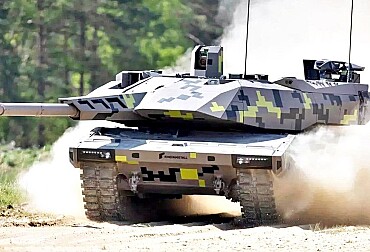Ukraine war enters a critical phase
The conflict in Ukraine has escalated into a critical stage with Russian forces launching a significant offensive from the border into the Kharkiv region, as reported by Politico. Fierce battles are not only taking place to the north and northeast of Kharkiv but also around Bakhmut near Chasiv Yar, Vuhledar, Robotyne, and the Mokri Yaly River valley, where last year’s Ukrainian counteroffensive stalled.

Intensified focus on Kharkiv
Recent days have seen a concentration of attention on the intense fighting in Kharkiv, where attacking Russian troops have gained a tactical advantage, breaching Ukrainian defenses. Politico reported on Monday that this development signals "the beginning of a decisive battle crucial for the outcome of the war." The stakes are high, involving not just control over Kharkiv, Ukraine's second-largest city after Kyiv, but also the country’s capacity to continue the fight.
The fall of Kharkiv could trigger a significant shift, potentially leading to a decrease in Western support, warned Politico.
Russian offensive underway
Politico regards the assault on Kharkiv as a long-anticipated Russian attempt to launch an offensive and break through Ukrainian lines. Initially expected by the end of May, speculations then moved to June, but the offensive is now clearly in progress. President Putin appears eager to exploit a window of opportunity before more Western munitions and weapons arrive to bolster Ukraine’s defenses, noted Politico.
This rapid, unprepared attack strategy is reminiscent of the 1942 German Marshal Rommel’s capture of Tobruk in Africa.
The northern offensive began on Friday and by Sunday had expanded into a two-pronged assault. Heavy fighting is now ongoing in towns and villages across a 30-kilometer arc, according to Politico.
Ukrainian President Volodymyr Zelenskyy has already ordered the evacuation of 6,000 people from the area and pledged to send reinforcements: "We are sending more forces to Kharkiv. Along the state border and the entire front line, we will destroy the occupiers in ways that will disrupt any Russian attack plans."
Western aid and ukrainian resistance
With the United States having approved assistance, which began to flow according to Tuesday's statement from the US Secretary of State, the commander of Ukrainian ground forces, Oleksandr Pavlyuk, is confident that Ukraine can hold the front line: "Russia knows that once we receive enough weapons in a month or two, the situation could turn against them."
Risks at Chasiv Yar
However, diverting aid to the Kharkiv front may weaken Ukrainian positions both at Bakhmut, where occupiers have advanced to the outskirts of Chasiv Yar, and along the front between Donetsk and Zaporizhzhia regions. Russian forces are pressing attacks on Vuhledar and the Mokri Yaly River valley, the route of last year’s Ukrainian offensive, as well as further west near Robotyne.
The situation at Chasiv Yar, already dire, is deteriorating, reported Dmytro Kozhubenko from the National Guard’s Rubizh Brigade headquarters in a live broadcast. According to him, Russians have changed tactics: "They no longer conduct mass assaults but frequently attempt attacks from the villages of Ivanivske and Bohdanivka (thus from two directions)."
The enemy is using smaller assault groups, allowing them to maintain reserves. They have not yet deployed mechanized units. "Towards Chasiv Yar, the enemy has concentrated some of their most trained units, including airborne forces," Kozhubenko described.
He noted that the adversary has not given up: "They are trying to erase this town (Chasiv Yar) from the map with FAB bombs and UAVs," Kozhubenko said, adding, "The large number of deployed aircraft allows the enemy to suppress our firing positions."
Strategic implications
The town might fall. Although Pavlyuk described Chasiv Yar as a strategically insignificant "ordinary town," its fall would jeopardize the supply lines to Toretsk and could open a path for the occupiers through Kostyantynivka to Kramatorsk and Sloviansk. Capturing these cities would enable Putin to achieve one of his declared war aims: control of the entire Luhansk and Donetsk regions. Previous attacks at Marinka and Avdiivka, which the Russians managed to capture, suggest this is one of the occupiers’ priority objectives.








